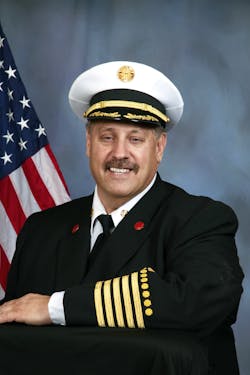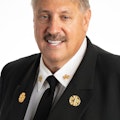The horrific events that occurred at the Route 91 Harvest Festival have forever changed fire and medical event and mass-gathering planning. I am afraid that the shooter has written a new chapter for future active shooters to follow by creating an elevated shooting platform on a large crowd with an expansive field of fire.
The last such event occurred in 1966 when Charles Whitman fired from the University of Texas Tower in Austin. Whitman first murdered his mother and wife in their homes, then went to the university, where he shot and killed three people inside the university’s tower. He then went to the tower’s 28th-floor observation deck and fired at random for 1½ hours, killing 11 more people and wounding 31 before being shot and killed by two police officers.
Key factors for mass gatherings
Before we go further, let’s first consider what constitutes a “mass gathering.” The National Association of EMS Physicians (NAEMSP) defines a mass gathering as an “organized emergency health services provided for spectators and participants at events in which at least 1,000 persons are gathered at a specific location for a defined period of time.”
Medical coverage and planning for mass gatherings has traditionally been based upon several factors: type of event, crowd size, indoor vs. outdoor event, temperature, presence of alcohol and age of the crowd. As such, the medical coverage for an electronic dance concert with 5,000 teenagers in an outside venue with temperatures in the 90s might require more medical coverage than a Celine Dion concert with 25,000 people at an indoor theater at Caesars Palace. In the case of the Route 91 Harvest Festival, there were approximately 22,000 people in attendance in an outside venue.
Another factor to consider is accessibility to the crowd. Do you think you will need smaller vehicles, like golf-carts, gators or other small-wheeled based vehicles, to move patients through the crowd because an ambulance would be impractical? Would bicycle or Segway medical teams be of value? Do you anticipate many treat-and-release patients? If so, some first-aid tents staffed with medical personnel would be appropriate.
Unfortunately, because of what happened in Las Vegas, we must also consider a new factor for outdoor venues, particularly where there is an elevated platform, such as a tall building or a hillside—the possibility of an active shooter event and mass casualties.
As of this writing, full details have yet to emerge, but 58 have died and more than 500 have been injured. The final numbers will bear out how many were shot and how many were killed or injured from attempts to get away, including jumping over fences, getting trampled, having a heart attack from the extra exertion, etc. While I suspect all 58 deaths may be from being shot, I doubt all 500+ injuries are from gunshots.
Incorporating active shooters from an elevated platform or aerial location into our planning for mass gatherings is now a reality. Things to consider with your planning: staging a cache of medical supplies in trailers near the event; preplanning staging areas for additional ambulance called into the scene; methods for monitoring patient flow at hospitals, as many patients (in large, multi-casualty events) will be transported to the hospital by means other than an ambulance. This was true in the Oklahoma City bombing, the Aurora Theater shooting in Colorado and in the most recent event in Las Vegas.
Have you coordinated with your local law enforcement authorities in the event you need to establish a unified command post? You may want to consider proactively establishing a unified command post during the event rather than waiting to need one in case something does happen.
Final thoughts
The U.S. military has not fought a single war without preplanning every operational, logistical and administrative aspect. An NFL football team does not go into any game without a game plan. So, why would any fire or EMS agency think they could handle any mass gathering without preplanning? Unfortunately, after the tragic events in Las Vegas, the dynamics for medical planning for any mass gathering have now changed forever.
About the Author
Gary Ludwig
GARY LUDWIG has served in three fire departments over his career: St. Louis, Memphis, and Champaign, IL. His fire, EMS and rescue career spanned a total of 46 years, and he has been a paramedic for over 44 years. Ludwig served as president of the International Association of Fire Chiefs in 2019-20. He has a Master’s degree in Business and Management, has written over 500 articles for professional fire and EMS publications and is the author of seven books.
Connect with Gary
Email: [email protected]
Facebook: Gary Ludwig
Twitter: @ChiefGaryLudwig
Website: garyludwig.com

